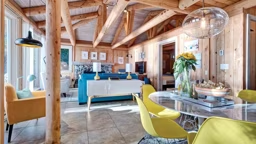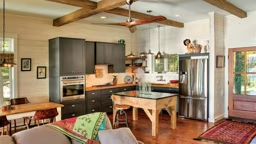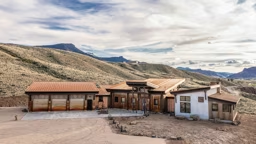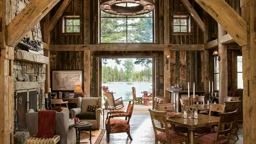

A large umbrella casts cool shade over a table and chairs. Choose a neutral like this one, or add a punch of color with a bright umbrella.
1. Open an Umbrella

Most canopy gazebos come with an anchoring system that uses either concrete screws or guy wires. Make sure that any anchors are positioned out of the path of traffic so they don’t present a tripping hazard.
Canopy gazebos offer great opportunities to hang hanging baskets, string lights and chandeliers — all to make it more inviting.
2. Put Up a Canopy Gazebo

Although wisteria will cover your pergola quickly, it may take several years for it to bloom. And make sure your pergola is sturdy — those woody vines can crush lightweight lattice.
3. Cover a Pergola With Vines

Although you can use any fabric for overhead shade, you’ll get the best results from a fabric made for this purpose (a popular brand is Coolaroo). Shade cloth stands up to wind better than ordinary fabric, and you can choose a specific amount of light ltering, too.
Keep any sort of shade fabric well clear of the grill to prevent fire hazards.
4. Add Fabric Overhead

When you’re choosing a shade tree, check the tag to see how big the mature tree will be. Then make sure you plant it far enough from your house or structure. You want the mature tree to arch over the seating area for shade, but you don’t want to have to spend a lot of time pruning branches away from the house.
Keep limbs trimmed up so that they’re at least 10 ft. above the fire pit for safety.
5. Choose the Right Tree
Planting a tree for shade won’t give you the instant gratification that an umbrella or a structure will, but it’s still a good idea. (You can enjoy other shade options, like the pergola in the photo, while you wait for the tree to grow.)
Sitting a shade tree on the southwest corner of a house or seating area will ensure that you get shade during the hottest part of the day. But if you use your seating area in the morning, you may want a tree to the east too.
The tree you plant will depend on your needs. Some trees, like maples or oaks, cast dense shade while others, such as birches or honeylocusts, offer lighter shade. For a small seating area, a small ornamental tree may offer plenty of shelter, but for a larger area, you may need a full-size shade tree or several smaller trees around the perimeter. Below, you’ll see four trees that grow quickly enough to offer shade in a few years, without dropping many messy leaves or twigs.When you’re choosing a shade tree, check the tag to see how big the mature tree will be. Then make sure you plant it far enough from your house or structure. You want the mature tree to arch over the seating area for shade, but you don’t want to have to spend a lot of time pruning branches away from the house.
See more Tips and Tricks When Power Washing

Before you go to a lot of work hanging curtains or blinds, make sure they’re right where you want them. Sit in your chairs at different times of day and use sheets or even rolls of craft paper to test your curtain placement to be certain they’ll block the most annoying rays of light.
6. Cue the Curtains
What about a little serving of shade on the side? We usually concentrate on overhead shade. But creating shade at the sides of your seating area is just as important, especially on the east and west sides. Many gardeners enjoy their gardens most in the morning or late in the day — both times when low rays of sun get in your eyes or scorch the back of your neck.
If you have a gazebo, porch or pergola, just add curtains. Roll-up blinds are another solution if you have a structure to mount them on. These are often made of split bamboo, for a touch of tropical air in any garden.
If you don’t have an overhead structure to hang shades from, think from the ground up! Garden screens, either purchased or custom-made, can block light. You’ll find everything from fabric-covered screens to simple lattice screens that can support a colorful climbing vine for extra shade.Shrubs are another ground-up solution. Large shrubs, like lilacs or viburnums, could even shade most of a small patio — and many shrubs offer fragrant flowers, too, which will be a bonus near a seating area. Most shrubs grow more quickly than trees, so your patio- or deck-side garden will look established soon.
Don’t let blazing-hot sun keep you from enjoying your outdoor seating area. Make sure it has a bit of inviting shade and you’ll be a lot more comfortable in your garden.










